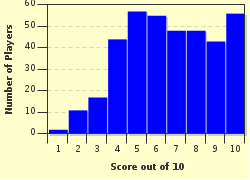Quiz Answer Key and Fun Facts
1. Firstly, polymers are long chains which are made up of many molecules known as monomers. These monomers can be anything from amino acids, to alkenes, to alcohols. What all polymers have in common is the type of bond which holds their monomers together. What type of bond is this?
2. There are two main types of polymerization, the first being addition. Which of these is a requirement of monomers in order to undergo addition polymerization?
3. Polymers formed via addition polymerization are often used as plastics. The atoms/groups which make up the monomers determine the properties of the plastic. An example of this is polystyrene. Which monomers join together to form polystyrene?
4. Whilst the plastics formed by addition polymerization reactions are useful for many things, numerous problems arise when they are disposed of. One method of reducing these problems is by chemical recycling. Which word is used to describe the breaking down of long chained polymers into shorter chained ones, as it happens in chemical recycling?
5. As mentioned earlier, there are two main types of polymerization, the second of which is condensation polymerization. During a condensation polymerization reaction, many monomers join together. What is lost when two monomers join together via a condensation reaction?
6. As mentioned previously in this quiz, proteins (polypeptides) and carbohydrates (polysaccharides) are both polymers. True or false, the third of the major biological molecules, the lipids, cannot be described as polymers.
7. Still on biological molecules, the incredible length of these polymers (sometimes tens of thousands of monomers) often results in the formation of a tertiary, 3-D structure. An example of this is in globular proteins. Which of these is NOT a force of attraction which usually acts between the different sections of the polypeptide chain of a globular protein?
8. One major group of condensation polymers are the polyesters. Typically, these are made up of two different monomers which are arranged alternately along the length of the polymer chain. An example of polyester is Terylene. In what everyday item is terylene often found?
9. Another group of condensation polymers are the polyamides. Natural examples of polyamides are proteins. Which artificial polyamide is often used in the manufacture of crash helmets and bullet proof vests?
10. When non-symmetrical alkenes polymerize (such as chloroethene - which makes up PVC), there 3 ways in which the groups can be arranged in 3-D space. For example, if all of the -Cl groups in polychloroethene (PVC) were arranged in the same direction in 3-D space, the polymer would be described as isotactic. What term is used to describe a polymer where the groups are arranged randomly?
Source: Author
doublemm
This quiz was reviewed by FunTrivia editor
crisw before going online.
Any errors found in FunTrivia content are routinely corrected through our feedback system.

